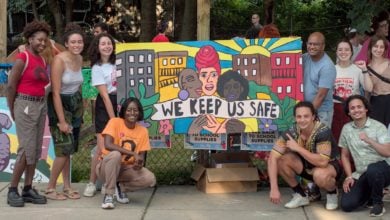The Boston School Committee is attempting to rezone the city’s school district. The changes would further segregate a school system that already disadvantages low-income students of color. The district now is divided into three zones—north, east and west. The new plan will reorganize the district into five zones and prevent students from attending schools that are outside the zone in which they live.
The movement that is rising up against this plan, led by the Coalition for Equal Quality Education, is calling this plan what it is—an attempt at re-segregation that would rival the levels seen before the desegregation of the Boston schools in the mid-1970s. BSC attempted a similar rezoning plan five years ago and was defeated.
BSC has a long history of racial injustice. In the court case of Morgan v. Hennigan in 1972, the plaintiffs argued that the “racial imbalance” in the Boston schools was maintained by BSC through assignment rules and other policies. The BSC lawyer argued that the imbalance was simply the result of a “neighborhood school” policy. The judge agreed with the plaintiffs and ruled in 1974 that the committee “used covert techniques to segregate the system” with “segregative intent.” (J. Anthony Lukas, “Common ground: a turbulent decade in the lives of three American families,” Knopf, 1985)
A plan was arrived at to integrate the highly segregated schools. The plan involved the extensive busing of students into other neighborhoods. On the first day of school in 1974, racist rioting and violence broke out at South Boston High School in response to the arrival of Black students from the predominantly African-American neighborhood of Roxbury—nine students were injured by the aggressive, reactionary crowd of bigots.
The violence at this school, and a few select others, led to an increase in attacks on African Americans throughout the city. In May of 1975, the judge in the case revised a proposed plan to amend the bussing system and increased the number of students who would be bused to different schools in order to create a more “uniform racial ratio” in Boston’s schools.
Segregation on the rise
Despite these efforts 30 years ago, the level of racial segregation has increased in the district since the 1970s, as it has in most urban school districts. BSC is now proposing to further limit the choices that students have and further erase any past successes at integration.
Interestingly, a majority of the schools in three of the five new zones would be schools that have been labeled as “underperforming.” Only one of the new zones would have a small percentage of underperforming schools—the Allston-Brighton zone, which has a large white population.
In other words, not only are the choices of students in Boston Public Schools being limited, but the students in communities of color will be much more likely to have to choose between mostly “underperforming” schools.
CEQE, which is composed of educator alliances, parent networks, unions and several other activist groups and organizations, estimates that 10,000 students, or 20 percent of Boston Public School students, will be affected by this proposed plan. The coalition argues that this plan will limit the choices of the students and parents, all in the hopes of saving 2 percent of the money in the district’s budget by decreasing the amount of money spent on transportation.
BSC makes its final decision by voting on the five-zone plan June 24. PSL members in Boston and other community activists will be at this meeting to demand that the School Committee preserve the rights of all Boston school children by allowing them to attend their chosen schools and by fully funding all of their educational needs.
BSC must not save money on the backs of the children—all children deserve access to a quality education, and their schools and programs must be fully and equally funded. We must say no to attempts to resegregate a district and to deny the human right of quality education to children simply in the effort to save money.






